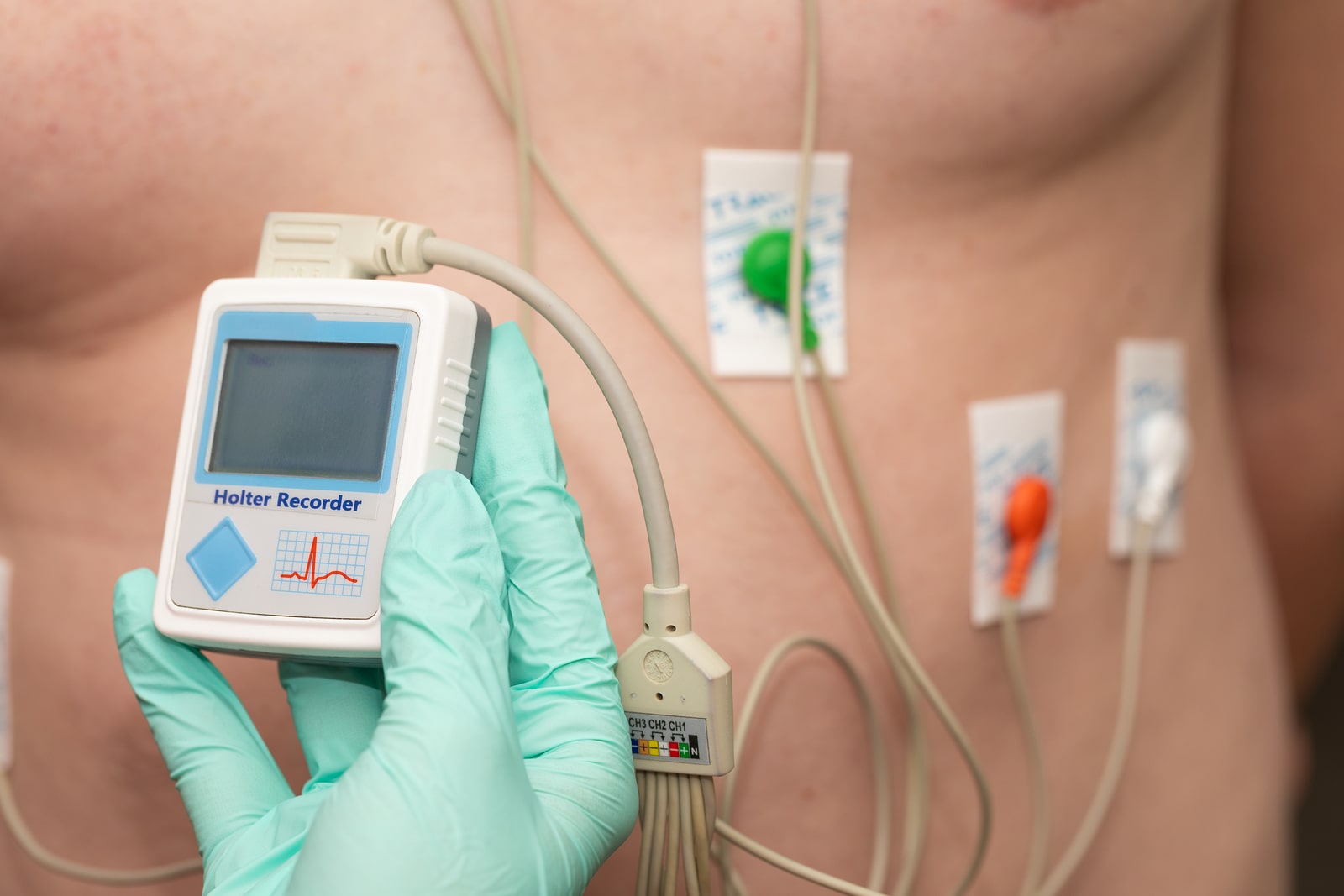Holter Monitors – What Are They Used For?
Posted by: Tampa Cardio
On: February 17, 2020

You may have heard of a Holter Monitor or even seen someone wearing one, but do you know what the purpose is and how they work?
Sometimes a patient will need to wear a monitor round the clock to keep track of heart rhythms and electrical impulses so that their cardiologist can make an accurate diagnosis and assign the right level of care and treatment.
Staying in the hospital for a length of time is both cost and life prohibitive. No one has the time to just hang out and lay there for days, nor is that healthy for you. That is the beauty of Norman J. Holter’s invention of the Holter Monitor.
The clinical use of cardiac monitors began in the 1960s and was based on the idea of telemetric cardiac monitoring which was Holter’s first design in 1949.
Advancements and upgrades to the Holter monitor created a much more compact portable device that allowed patients to be monitored for longer stints of time, and from the leisure of their own homes.
Holter monitors are worn for a minimum of two weeks and a maximum of one month. Modern monitors are comfortable when strapped or belted across the chest and are easily tucked away under clothing. They do not interfere with day to day activities.
There are two parts to a Holter monitor
The hardware – This is the physical monitor that stays with the patient and records any events.
The software – externally located in the doctor’s office is able to review and analyze what is recorded. This is convenient for both patient and doctor. Modern Holter monitors have buttons on the device that allow patients to designate when they are performing certain activities, such as taking medications, exercising, or going to sleep. This gives the doctor a better overall understanding of the patient’s heart activity.
Though Holter monitors are used in an array of instances the most common one is that your doctor suspects an arrhythmia may be present. Some arrhythmias can be detected be electrocardiograms, but these tests are quick and performed onsite so they are sometimes not able to detect certain problems that are occurring randomly or over time.
If you’ve experienced fainting spells, irregular heartbeat, or heart palpitations, it is likely that your doctor will recommend these tests for you. Once an arrhythmia has been properly diagnosed, further action can be taken in treating it, if your physician deems it necessary.
Whether you are looking for guidance in prevention, diagnosis, or treatment, call Tampa Cardiovascular Associates today at (813) 975-2800 to get started. Visit us on the web at www.tampacardio.com to learn more.
Posted by: Tampa Cardio
On: 17/02/2020
